12 Things to Know Before You Buy a Christmas Tree, According to Sellers
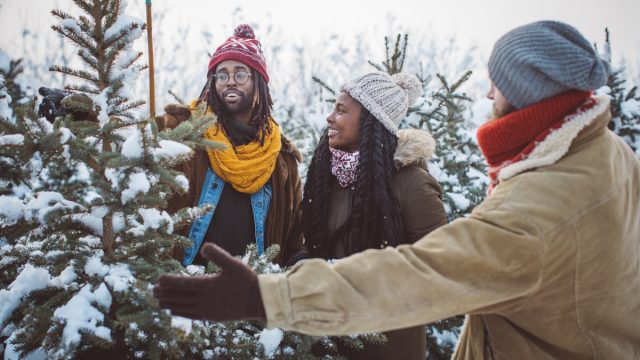
For those who celebrate Christmas, the tree is typically the holiday’s most cherished centerpiece. Decorating a Christmas tree to mark the holiday season is a tradition that dates back to 16th-century Germany with Americans adopting the custom as early as the 1800s. But despite the centuries we’ve collectively devoted to dressing up our Douglases, there’s still plenty that many people don’t know about buying a Christmas tree… even if they do it annually. Before you go out and spend your money this holiday season, discover the following secrets from Christmas tree sellers that they don’t give up too easily.
1
Look for trees with broken tops to score a deal.
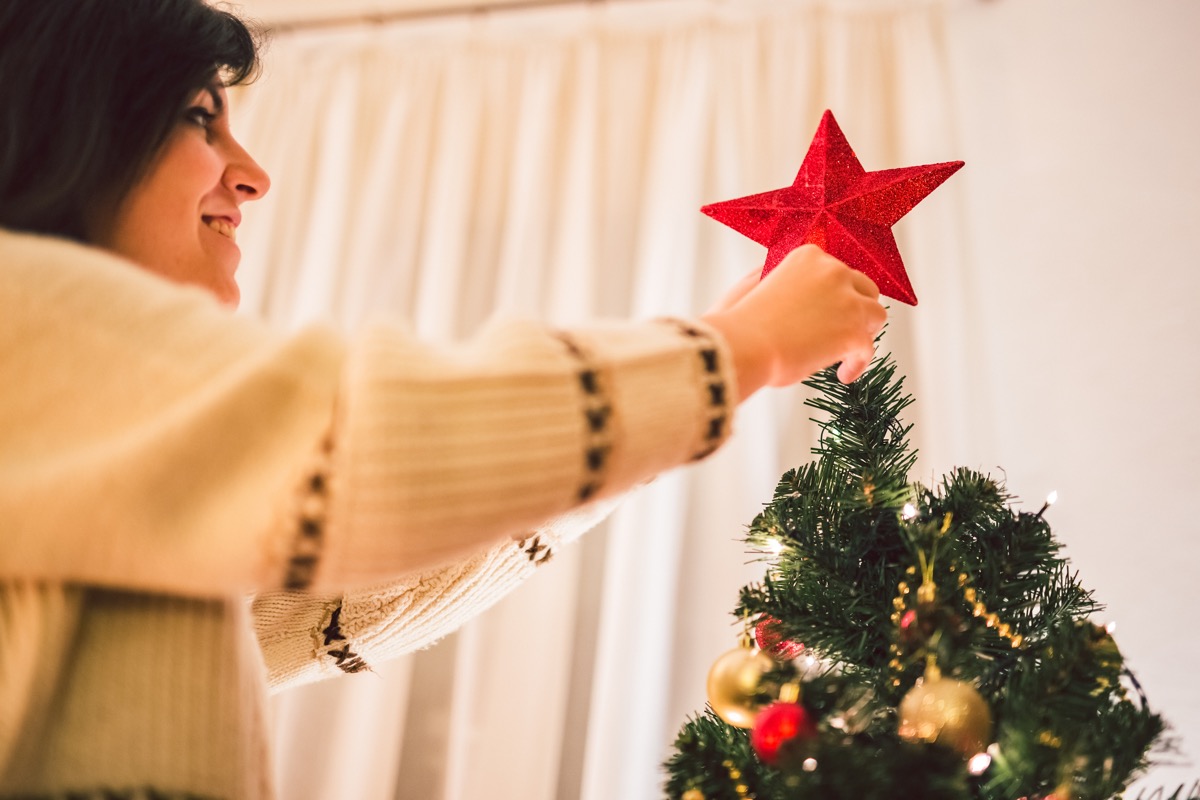
If you want a real Christmas tree for the season but can’t afford to pay top dollar, try and score a deal. David Daniken, with Daniken Tree Farm in Illinois, says you should ask your seller if they have any trees with broken tops. Since most of the Christmas tree business is spent making sure the top of the tree looks perfect, a broken top “cuts the tree value by about 25 to 33 percent,” says Daniken. Besides, if the rest of the tree is shapely, your tree topper will hide this flaw!
2
Save money by buying your tree in mid-December and on a weekday.
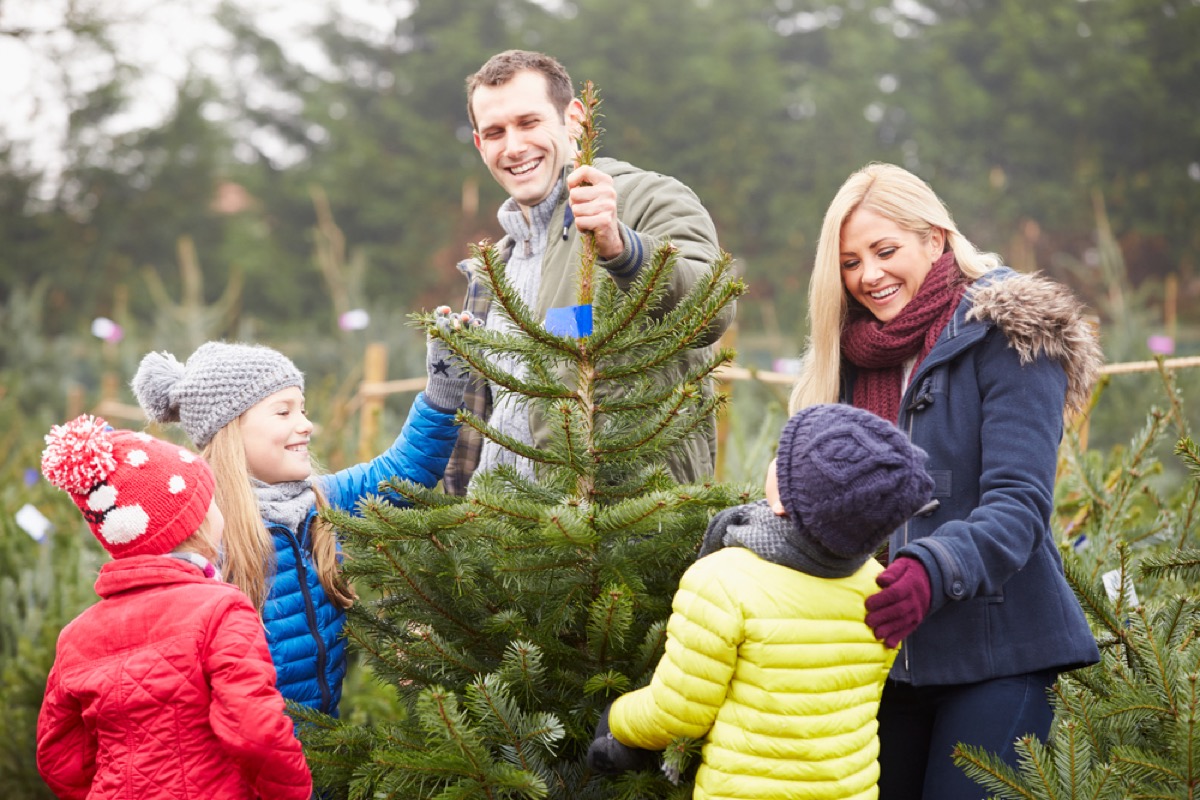
According to Market Watch, if you don’t mind waiting until the latter half of December o deck the halls, you could save a ton of money on your Christmas tree. Roughly 90 percent of trees are sold by the second weekend in December, so try visiting your vendor on a Tuesday or Wednesday after that when business is slower and the best deals are on offer.
3
Bigger isn’t necessarily better.
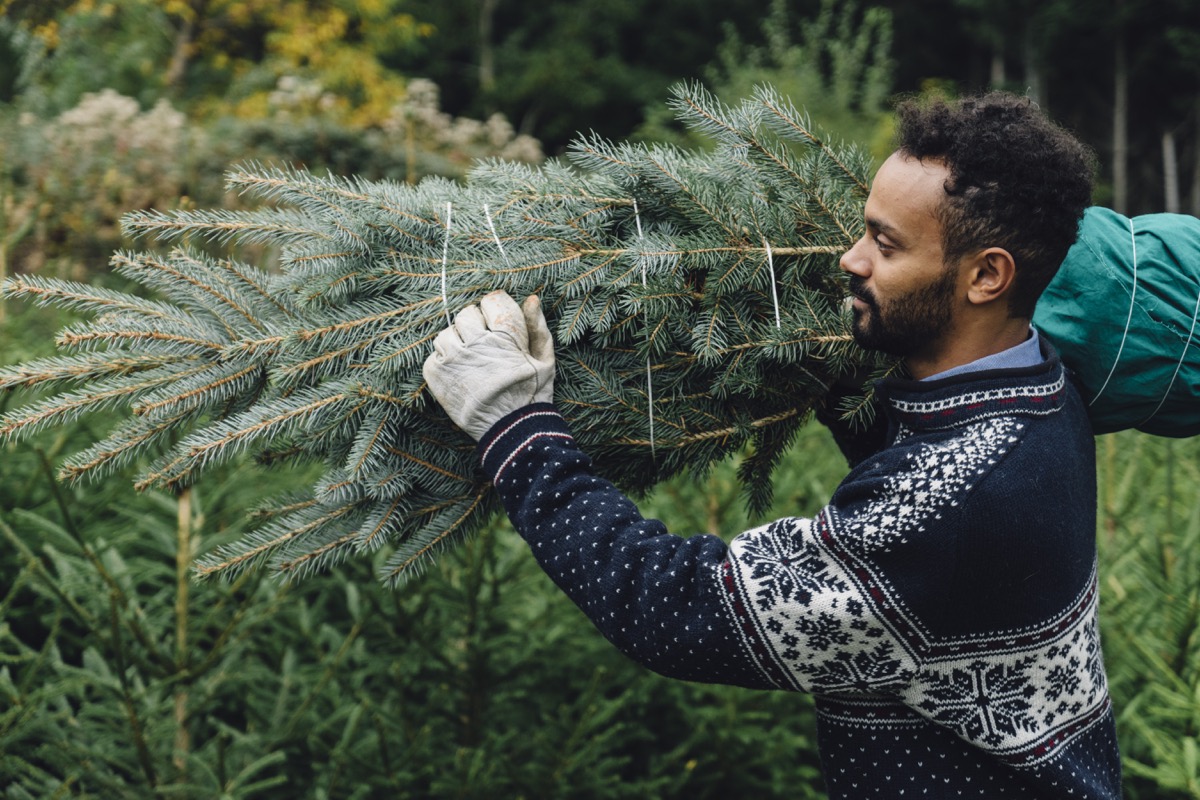
Getting a big tree can set a very merry tone for the holiday, and if you’ve got the space, go to town. Your Christmas tree vendor will probably be more than happy to sell you the biggest tree they can. But remember, bigger may not always be better. You need to take into account extra space needed for your tree stand and tree topper, which Daniken notes typically add at least 12 inches to the height of the tree.
Also keep in mind that as your tree settles after you unbundle it in your home, the branches will fall into a wider stance. Daniken urges customers to measure the dimensions—both height and width—of the space they plan to devote to a tree before they go shopping, and stick to it, leaving a good amount of space as well because “having your tree topper scraping the ceiling is extra tacky.”
4
You can buy live trees online.

Your Christmas tree vendor works tirelessly during the selling season, so it would not exactly be to their benefit to announce to their customers that these days, there is a very nice selection of live trees that you can buy online. In fact, you can buy some on Amazon, where they’re balled and shipped directly to your home, giving you more time to spend curled up with a book and hot cocoa, and less time lugging around a sap-covered, 50-pound plant.
5
Those hydration products are actually bad for your tree.
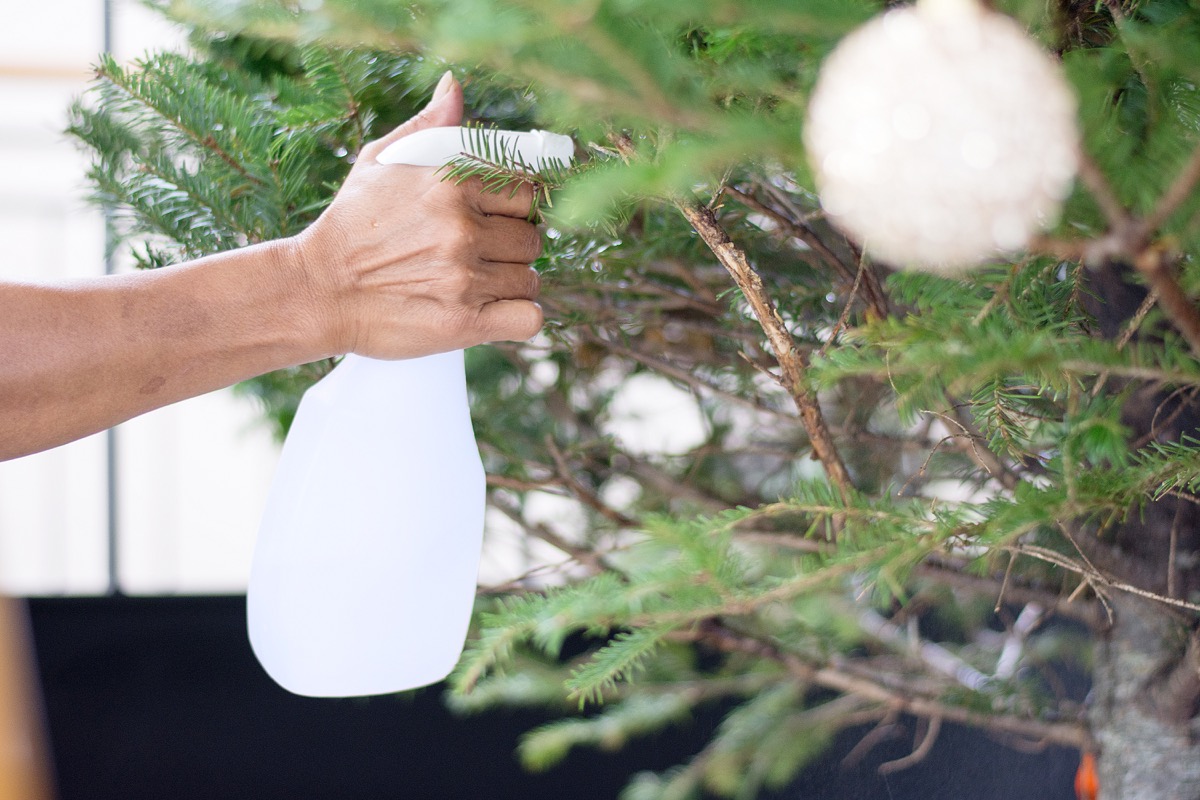
Beware the Christmas tree vendor who tries to up-sell you on any hydration gels or powders to add to your Christmas tree stand. There’s nothing you need to add to your tree but water, says Twyla Nash of Elgin Christmas Tree Farm in Texas. The National Christmas Tree Association (NCTA) also says that not only are these commercial options ineffective at retaining moisture, they usually contain additives that are actually harmful to your tree’s health and longevity.
6
If they don’t re-cut your tree, it won’t last.
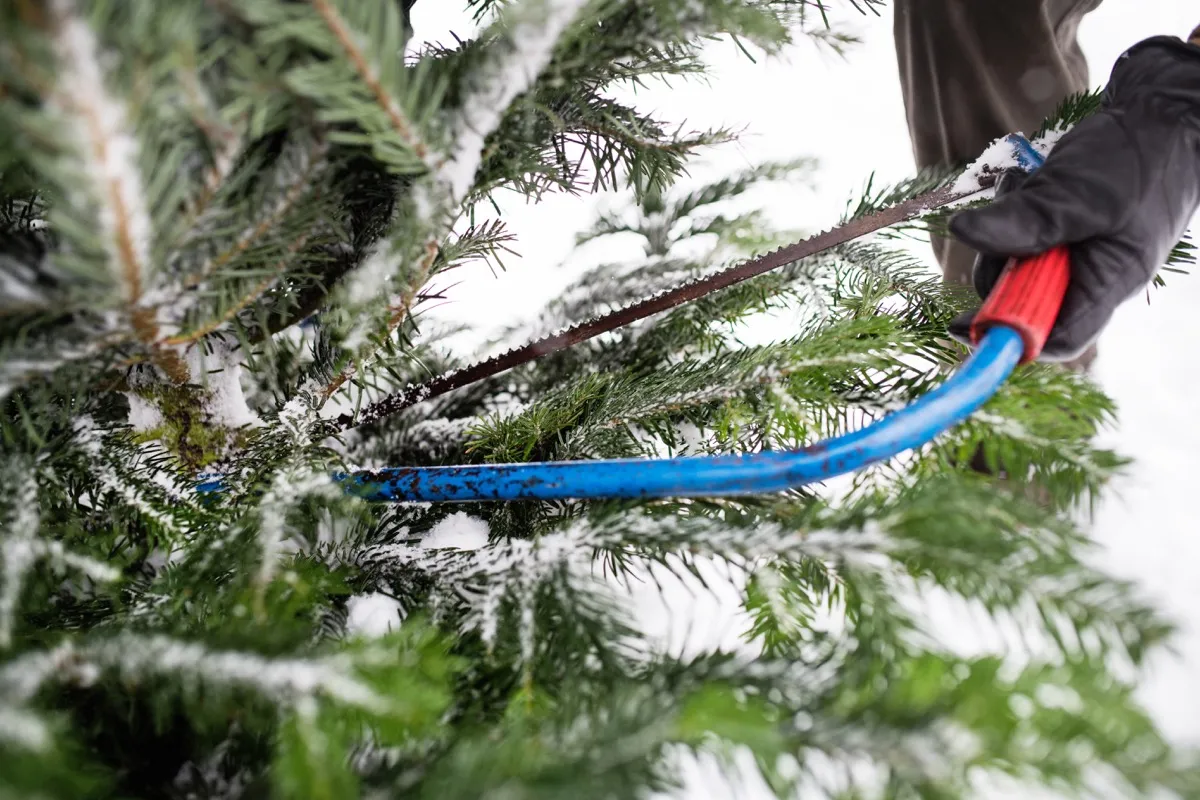
If you buy your tree and the vendor doesn’t make a fresh cut off the base upon sale, they’re selling you short. The NCTA says that without re-cutting, trees aren’t able to absorb water at the rate needed—about a quart per day, on average—and will have a much shorter lifespan.
7
That iconic cone shape isn’t natural.
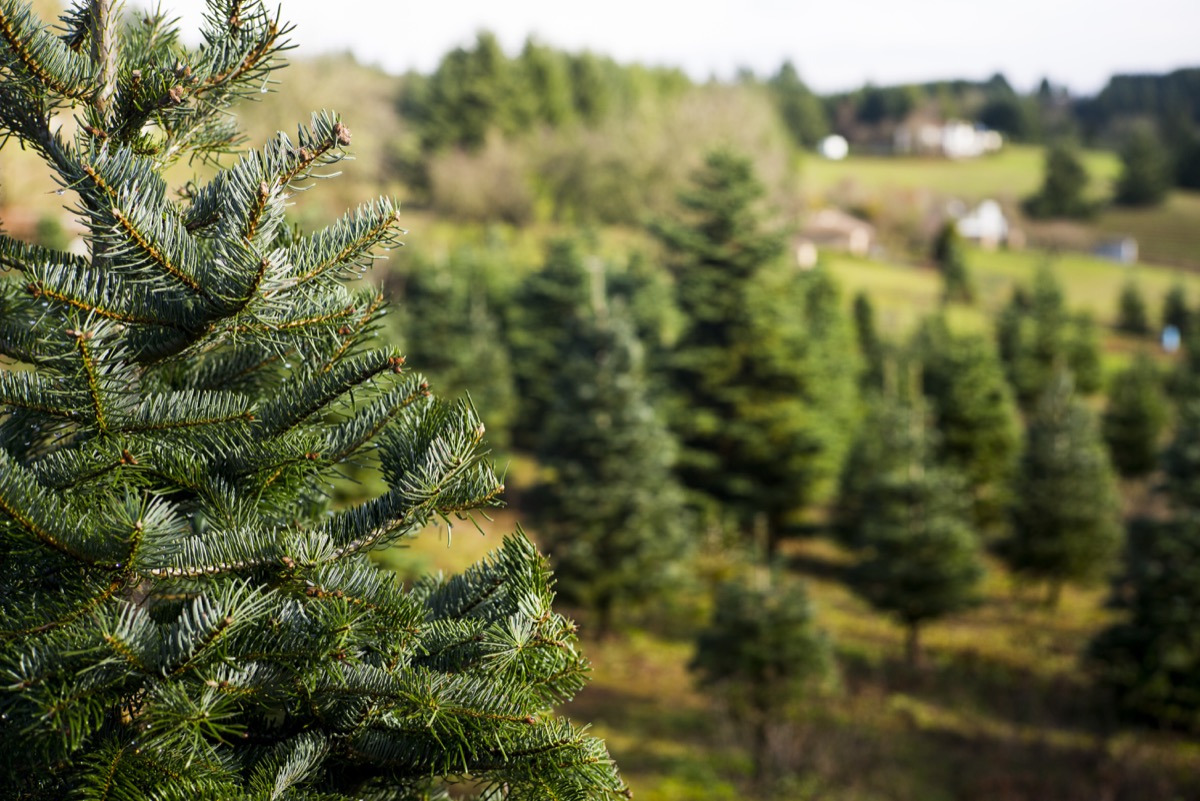
Whether you are team Douglas or team Fraser (fir, that is), everyone can all agree on one thing: The ideal tree is green and lustrous with pines that form a perfect conic shape. But if you think that shape comes naturally, think again. As Ben Butler of Butler’s Orchard in Maryland told the American Farm Bureau Foundation for Agriculture, when a tree reaches between three and four feet tall, farmers begin a strategic shearing process that they must repeat every year until maturity. This shaping process is done with a long and sharp knife and is what gives the tree its iconic Christmas look by the time it’s fully grown.
8
Your tree is already probably 10 years old.
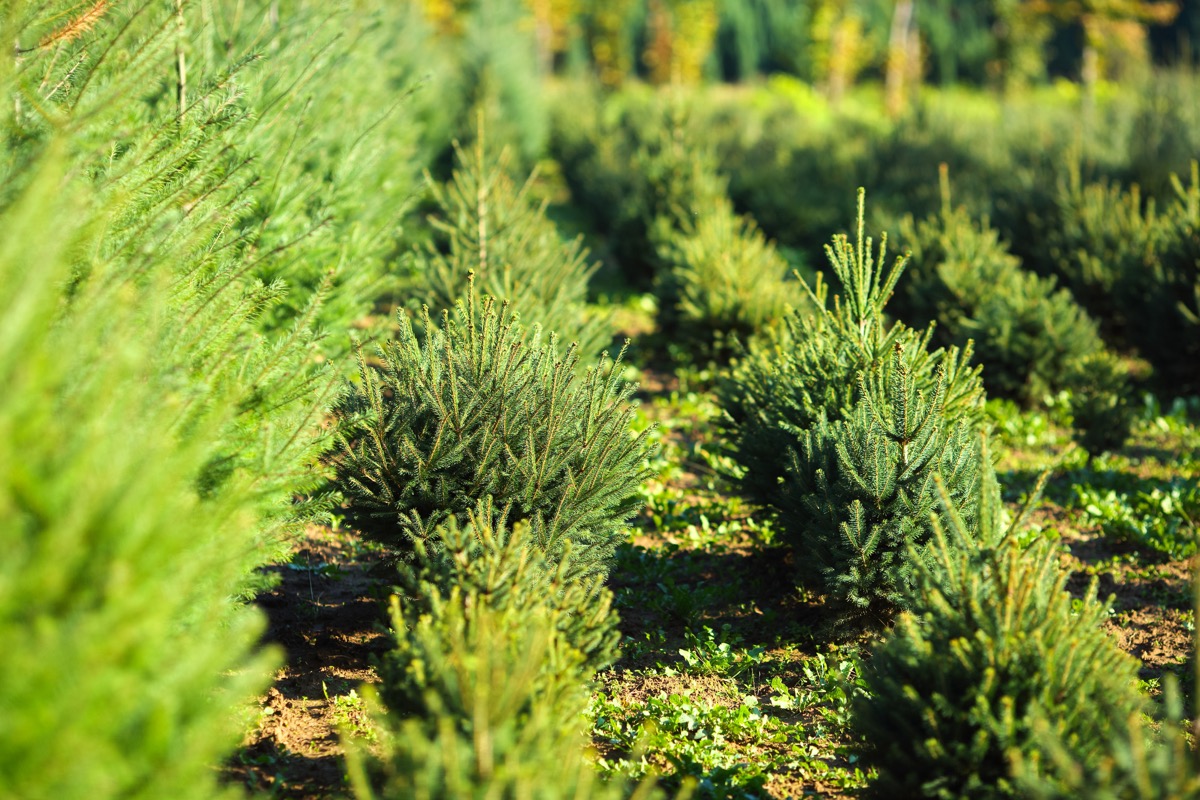
The last thing your vendor wants to do is guilt you out of buying a tree, but did you know that your average six or seven-foot Christmas tree grows for up to 10 years before its month-long stint in your living room? That’s a decade-long battle with the elements, and a decade-long relationship with the tree farmer, who meticulously prunes and shears each tree until it reaches maturity. But all that effort isn’t for naught: For every live tree harvested, farmers re-plant an average of one to three new seedlings.
9
Work conditions can be rough.
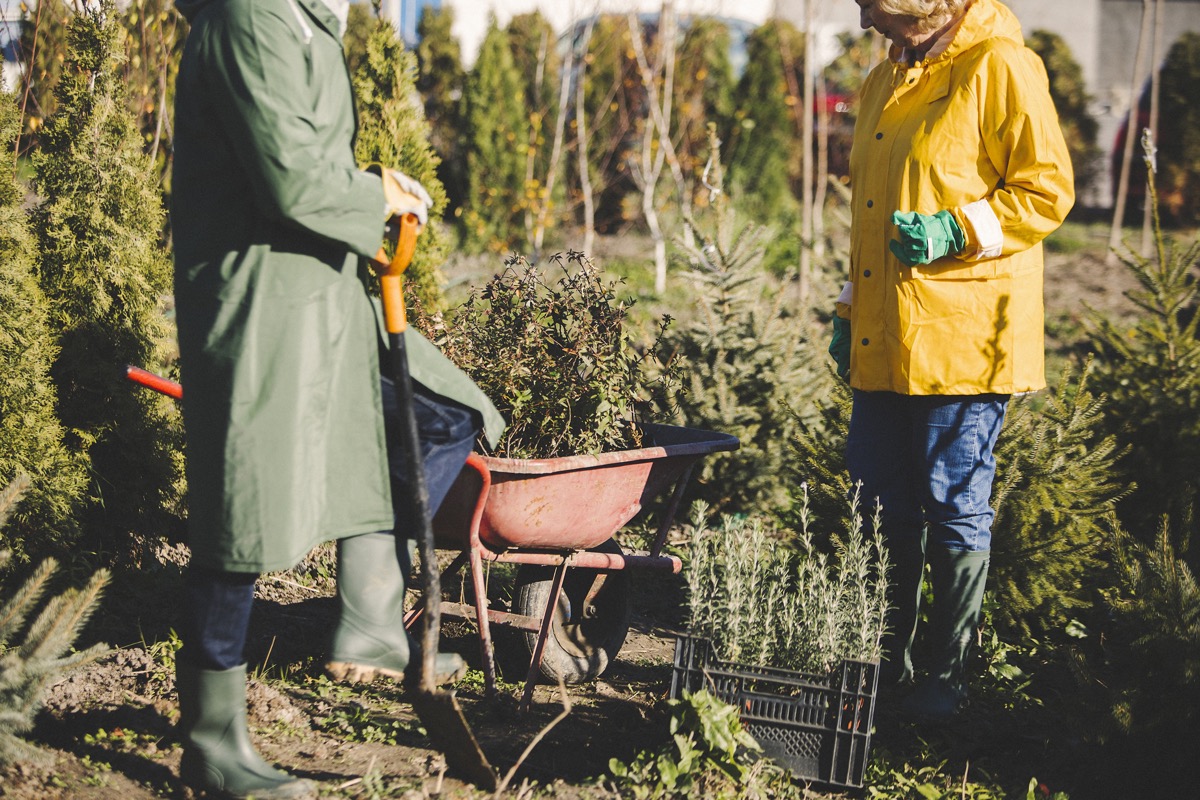
If your Christmas tree seller isn’t the complaining-to-customers type, they probably won’t tell you about all the hard work that goes into the selling season. It’s not all Christmas music and festive joy, especially in major cities. Oftentimes, vendors travel hundreds of miles from home only to sleep in campers, trucks, hostels, or at their shop stalls for a month or more.
On top of the less than luxurious living arrangements, the work itself can be grueling. Sellers can spend hours on end in the cold, lifting, bundling, and sometimes delivering heavy trees. One family-owned business reported to Business Insider that each person takes only a four-hour break each night to rest and makes an average of $14 per hour for their efforts.
10
The industry isn’t as quaint as you think.
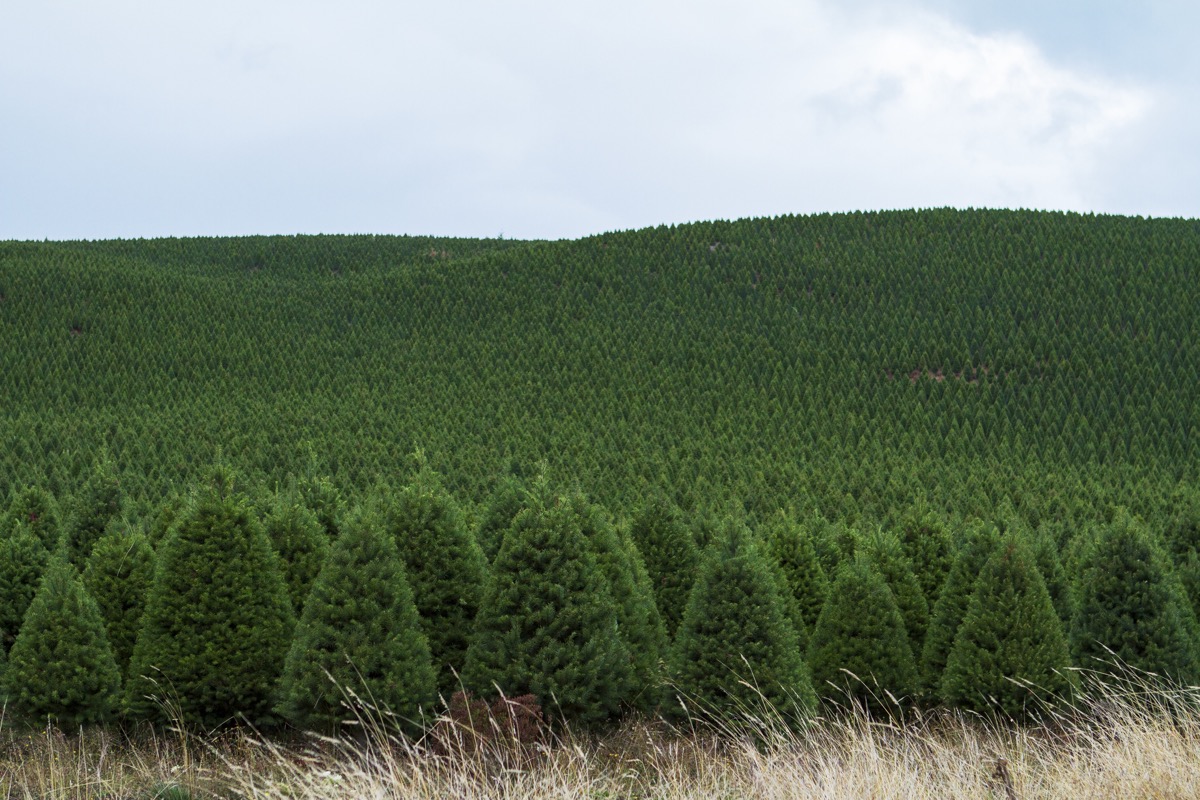
Sure, a lot of Christmas tree farms are small and family-run, but that doesn’t mean they’re not part of a booming, big business industry. According to the NCTA, Christmas tree farms employ roughly 100,000 people across all 50 states, selling between 25 and 30 million trees—creating quite a large live tree industry in America.
11
Artificial trees are the enemy.
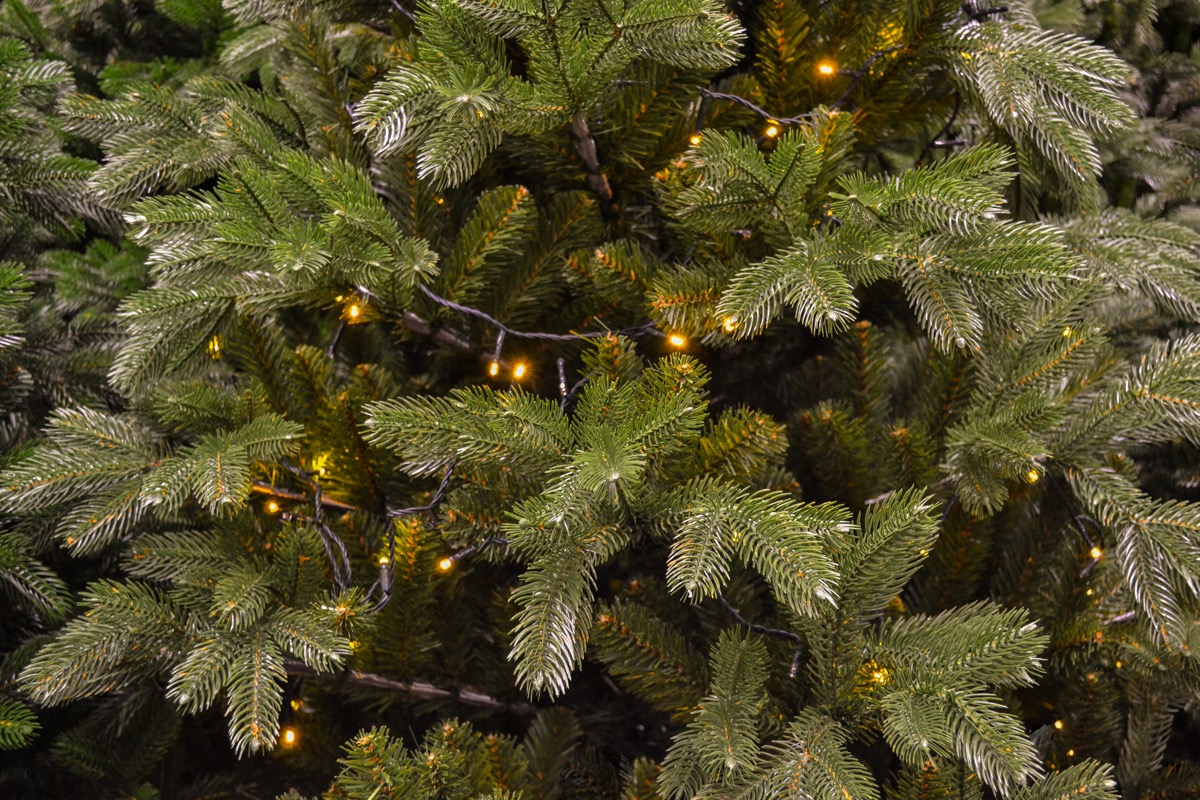
Chances are high your Christmas tree vendor hates the artificial tree industry, but there’s no denying that there are perks to going plastic. A faux tree is more economical over time, and allows you to sidestep the heavy lifting and sticky, sappy setup associated with real Christmas trees. And if untangling Christmas lights is the perennial bane of your existence each holiday season, you may be interested to learn that many artificial trees now come with built in lights—cord-free, evenly distributed, and ready to go from many various retailers like the National Tree Company and Balsam Hill.
Sure, you miss out on the tradition of buying your tree from a charming little vendor—and decorating it if you go the pre-lit route. And yes, there are of course some very valid environmental concerns associated with the PVC in fake trees. But if it’s convenience you’re after—and you’ve got the storage space for the other 11 months of the year—artificial trees do have their benefits.
12
Christmas tree vendors need you.
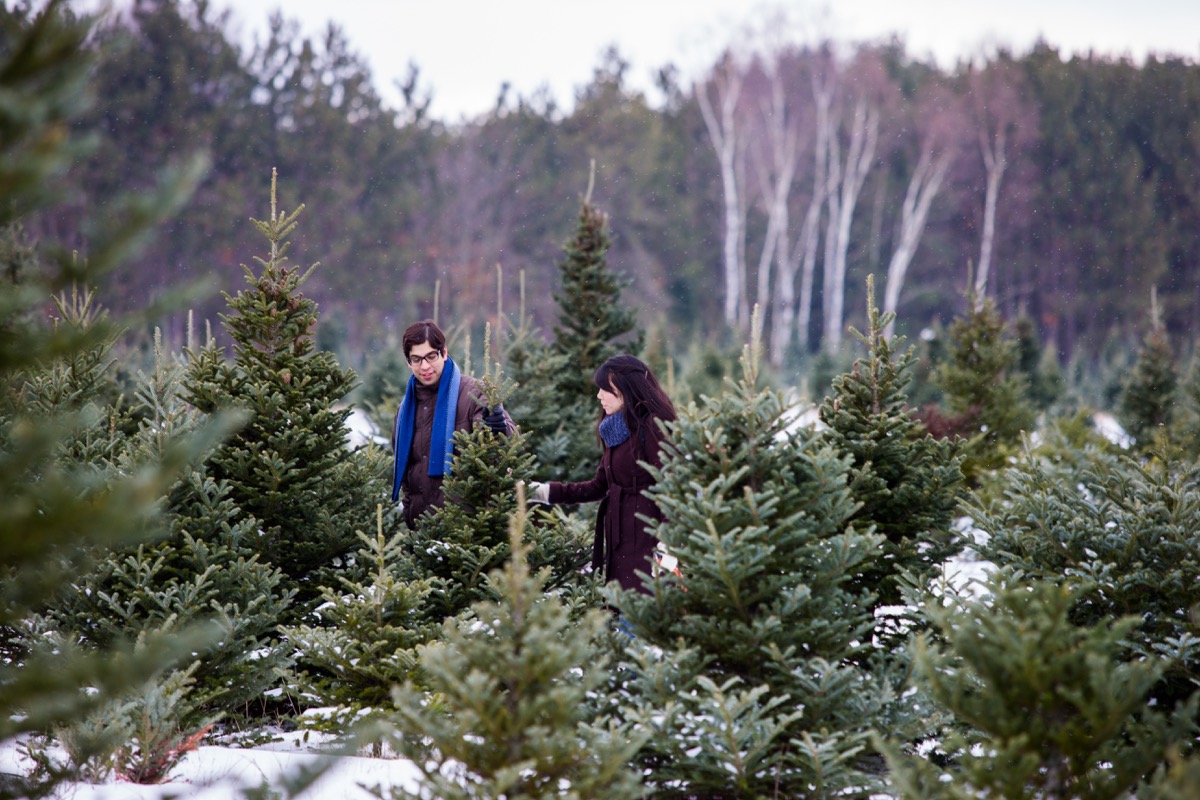
At the end of the day, the truth is that without customers, the Christmas tree selling business would be obsolete. Nash urges customers to come out and cut trees even when the weather is bad or there might be a drought. After all, she says, “if the customers don’t support the farm even in hard times, the farm won’t be able to continue growing Christmas trees.”